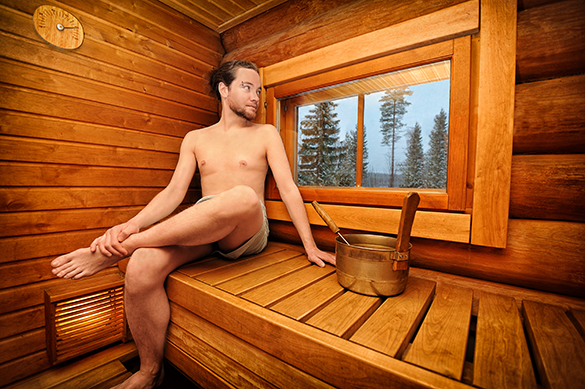What is the difference between a traditional sauna and infrared Saunas?

Steam rooms and saunas are both used for relaxation and health benefits, but they differ in several ways, primarily concerning how they produce heat and humidity.
Here are the key differences:
Heating Method:
Traditional Sauna: A traditional sauna uses a heater (electric, wood-burning, or occasionally gas) to warm up the air within the sauna room to high temperatures, typically between 150°F and 195°F (65°C to 90°C).
In some cases, stones placed on top of the heater can be sprinkled with water to create steam, which increases humidity.
Infrared Sauna: An infrared sauna uses infrared heaters to emit infrared light, which is absorbed by the skin.
This type of sauna directly heats the body rather than the air around you, operating at lower temperatures, usually between 120°F and 150°F (50°C to 65°C), and typically provides a more tolerable heat for longer sessions.




Temperature and Experience:
Traditional Sauna: The experience involves high ambient temperatures, and it can feel more intense due to the combined heat and steam.
This high heat can increase sweating and create a robust sense of heat immersion.
Infrared Sauna: Because the air temperature is lower, many people find infrared saunas more comfortable and easier to tolerate for longer periods.
The direct penetration of infrared light can cause the body to sweat profusely at relatively lower air temperatures, which some individuals prefer.
Humidity:
Traditional Sauna: Humidity can be adjusted by adding water to the heated stones, creating a steam room-like atmosphere if desired.
This is absent in dry saunas where less or no steam is used.
Infrared Sauna: These saunas operate at a low humidity level, as they do not use steam. This results in a dry heat environment.




Installation and Energy Use:
Traditional Sauna: Often larger and may require more extensive installation procedures, such as specific ventilation or electrical requirements.
They usually consume more energy due to the higher temperatures involved.
Infrared Sauna: Typically, these can be smaller, more portable, and easier to install in a residential setting.
They are generally more energy-efficient because they work at lower temperatures.
Health Benefits:
Both types of saunas may provide similar health benefits, including relaxation, muscle relief, improved circulation, and detoxification through sweating.
However, studies suggest that traditional saunas, using heat and steam, help with pain relief of joints and muscles, improve the respiratory system and cardiovascular health. The intense heat and steam also helps the body produce white blood cells faster, which helps to fight respiratory viruses and allergies.
While infrared saunas, using a more gentler heat, enhances detoxification, and by lowering blood pressure helps reduce inflamation, relieving pain relief of joints due to lowering the body's blood pressure and through a deeper tissue penetration.
It's important to remember personal preferences and tolerability when choosing the type.


Overall, the choice between a traditional and an infrared sauna often comes down to personal preference regarding the sauna experience, room availability, and specific health goals.





